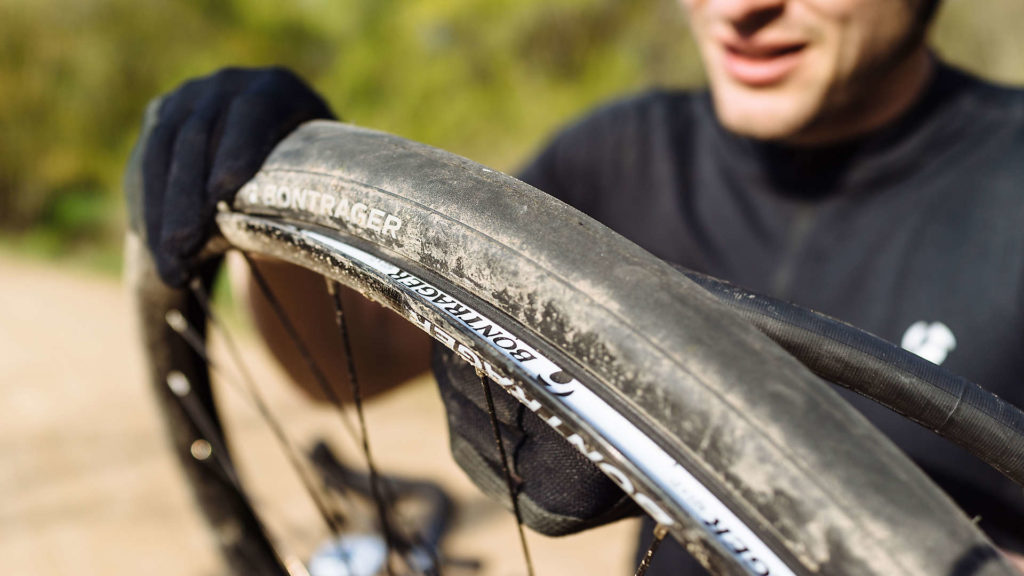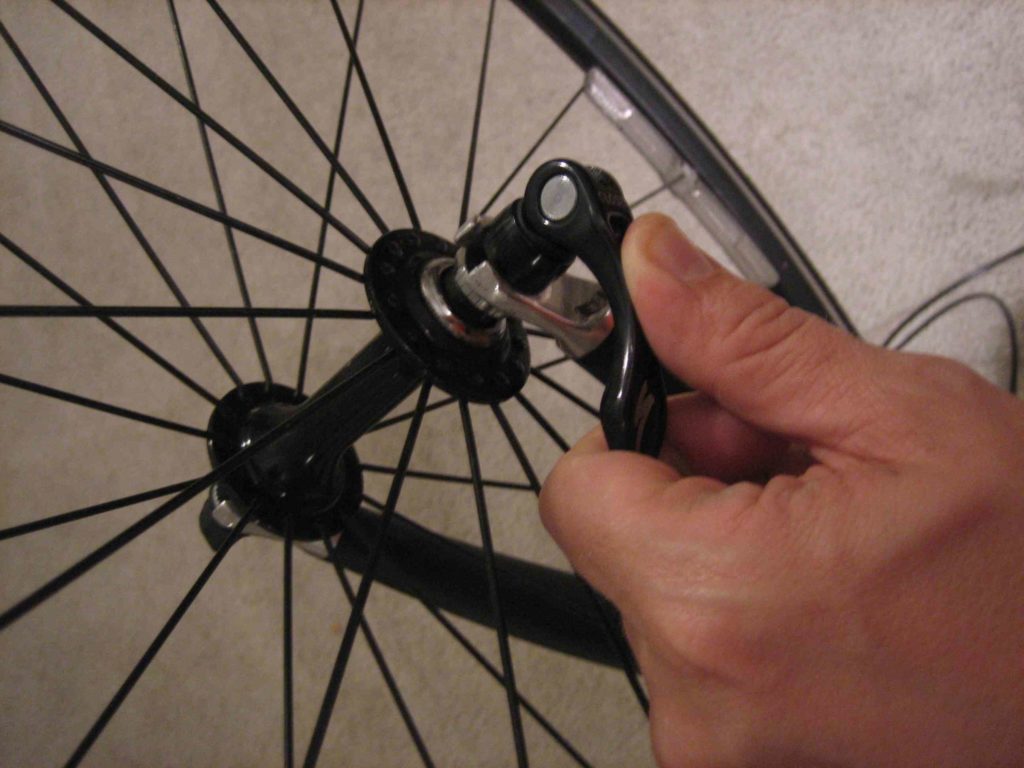Barton Haynes here in sunny San Diego. I had an informative experience this last weekend that I wanted to share. Surprisingly, in all my years of cycling I have never come across this before: namely, how do you repair a tube without a patch kit?
The Hole in My Tube
I pulled my bike down from its hangars in my garage, and immediately noticed that the front tire was flat. I unzipped the tire, pulled out the tube, and went to replace it with a brand new tube – except I only had one tube left.
I’ve learned the hard way that it’s better not to ride that to ride without any spare tubes. It was Sunday and too late to go to my local bike store. I didn’t really feel like trying to hunt down a patch kit anywhere else.
So instead, I tried to find the hole. Easy enough task. I hooked up the flat to the pump, began pumping, and listened for the tell-tale hiss of a hole, which I found. A perfectly round, small hole.
Method 1 – The Knot

Based on the research I have done, there are two tested ways to fix a tube without a patch kit. The first is by locating the hole, and then tying the tube around it into a very small knot.
Here is a great videoshowing how this is done with a road bike.
This works for a couple of reasons. One, it isolated the hole from your tube so air wont’ leak. Two, if you get your knot very small you likely won’t even notice the difference.
Use this method if you are already out riding and don’t have any other options. At home, there is another method you can use using.
Method 2 – Rubber Cement + Electrical Tape

For smaller puncture holes, rubber cement or any kind of contact cement works great.
It’s quite easy to apply after finding your puncture:
- Very lightly sand the area around the puncture, and then wipe it clean with a dry towel
- Use a toothpick or other fine object, cover the tip in the cement
- Inflate your tire just a bit so that it’s not flat and the hole is exposed
- Stick the toothpick into the puncture hole
- Deflate tire and pull out toothpick (this smears the inside of the tube with the cement)
- Inflate slightly again, and cover outside of puncture with rubber cement
- Cover with electrical tape
The nice thing about rubber cement or contact cement products is that you can get them at any grocery store. I’m not sure how long such a solution will last, whether it’s a few rides or as permanent as a patch. It worked great for my entire ride and I was able to pick up a patch kit and spare tubes the next day.
Thanks for following along. Happy cycling and best of luck on the road!
-Barton Haynes
